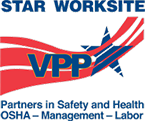 A man died Friday (January 21) after being overcome by fumes while trying to help two co-workers who lost consciousness inside a tank they were cleaning at a pharmaceutical plant north of Atwater Village, authorities said.
A man died Friday (January 21) after being overcome by fumes while trying to help two co-workers who lost consciousness inside a tank they were cleaning at a pharmaceutical plant north of Atwater Village, authorities said.
When Los Angeles firefighters arrived at the Baxter Healthcare Corp. about 4 a.m., one of the men had no heart rate and was not breathing although paramedics were able to restore his pulse, said Erik Scott of the LAFD.
The men had been cleaning the inside of a 4-foot-tall cylindrical tank with a 5-foot diameter, said the LAFD’s Brian Humphrey. The tank has a 24-inch diameter opening at the top, through which workers enter to clean it. When firefighters arrived, two men were inside and one was partially inside, Humphrey said. Firefighters pulled all three men from the “confined space” and brought them outside, he said.
LAFD Capt. Jaime Moore told the Los Angeles Times that the man who died had called 911 and then went in to help his unconscious colleagues, but was himself overcome by the fumes. The workers were using detergent to clean the container of blood plasma. They were overcome by ethanol, which was used as a separating agent for blood plasma, Moore said.
“We pulled special resources on scene, and they have the technical expertise to perform these operations,” said Moore. “Were it not for the actions they took when they got on scene, all three would be dead,” he added.
According to a company spokesperson, Baxter’s Los Angeles facility “is the world’s largest and most advanced plasma-fractionation facility, and has been in operation for more than 50 years.”
(Story from NBC Los Angeles, the LA Times and KTLA5News)

 “The fact that we rely on these instruments to detect hazards that may be colorless, odorless, and very often fatal, should be reason enough to motivate us to complete a very strict schedule of instrument calibration/maintenance and pre-use bump testing.”
“The fact that we rely on these instruments to detect hazards that may be colorless, odorless, and very often fatal, should be reason enough to motivate us to complete a very strict schedule of instrument calibration/maintenance and pre-use bump testing.” New for 2011! Practical skills training with a focus on compliance, but without the certification testing.
New for 2011! Practical skills training with a focus on compliance, but without the certification testing.


